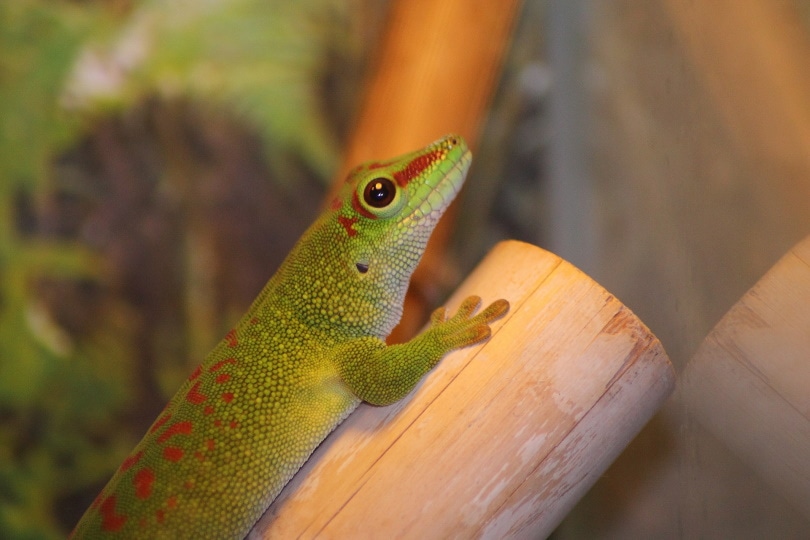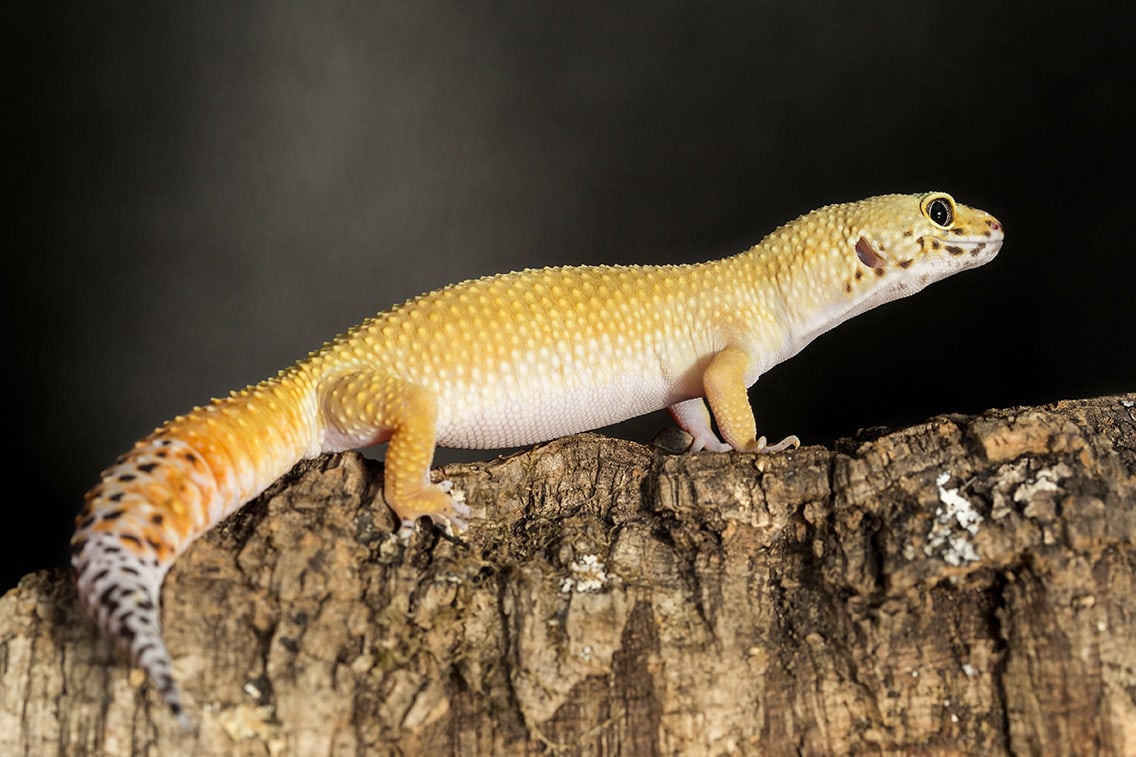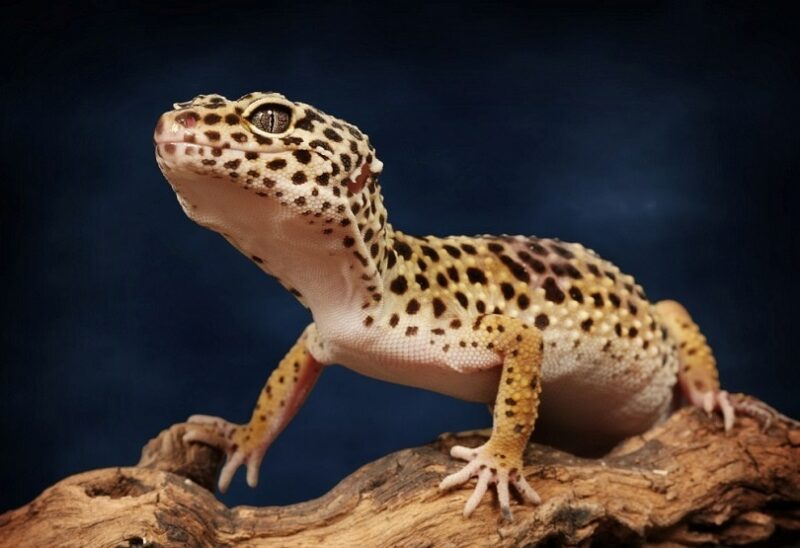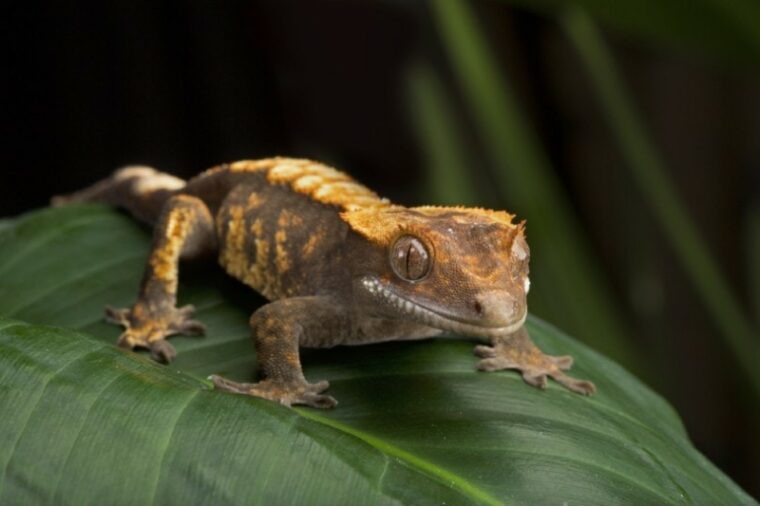
The crested gecko is a strikingly colored lizard that’s an excellent choice for a non-traditional pet. They are long-lived reptiles that reside in rainforests. They are from New Caledonia,1 a southwest Pacific Ocean island nation.
These lizards are best for novice pet keepers as they’re hardy, have a varied diet (insects, nectar, and fruit), and can adapt to various environments. Although they are interesting to watch, they have a nervous temperament and a fragile body.
In this article, we’ll learn the origins, native habitat, and secrets to successfully keeping crested geckos as pets.

Crested Geckos’ Origins
Crested geckos (Correlophus ciliate) are also referred to as cresties or eyelash geckos by enthusiasts.
These reptiles were thought to be extinct until 1994 when a French biologist, Alphonse Guichenot, found them again in the wild. Most of them had died off due to the introduction of destructive species of rats and fire ants brought into the area through imports to the island nation of New Caledonia.1
These geckos are native to the mountainous rainforests of this country, located 750 miles off Australia’s coast in the Southwest Pacific. They were first discovered there in 1886, but New Caledonia doesn’t allow their export anymore, so the available specimens are those flown out to Europe and North America after their subsequent re-discovery.
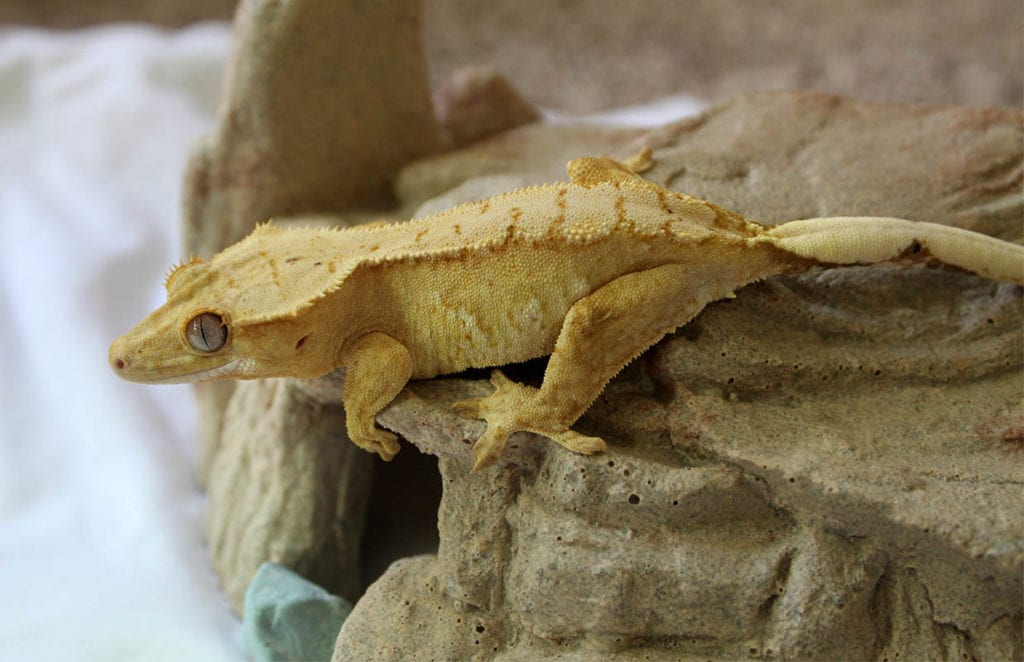
What’s the Natural Habitat of the Crested Gecko?
Originally, crested geckos were only found naturally in three pockets in New Caledonia, where they have a restricted habitat and range. Separate populations exist on this island in the South Province, including the offshore Isle of Pines and Grand Terre Island.
Other crested gecko populations can be found around the protected provincial park of Blue River and further north, south of Mount Dzumac.
The New Caledonian climate consists of three tropical seasons that are warm, cool, and transitional, but rains throughout the year can reach up to 120 inches. Most of this rain occurs during the warm season, which lasts for six months from November to March, when temperatures are as high as 86°F.
From June to August, temperatures reach 72°F before the rain decreases and temperatures fall with the cool season lasting four months. The remaining transitional time is characterized by low rainfall and high winds.
In the wild, crested geckos are threatened by species of fire ants that compete with the geckos for food and will sometimes also prey on them, attacking and stinging in large numbers.
About Crested Geckos
A few distinctive features set these geckos aside from other species, including slightly baggy skin with a different texture from many of its counterparts.
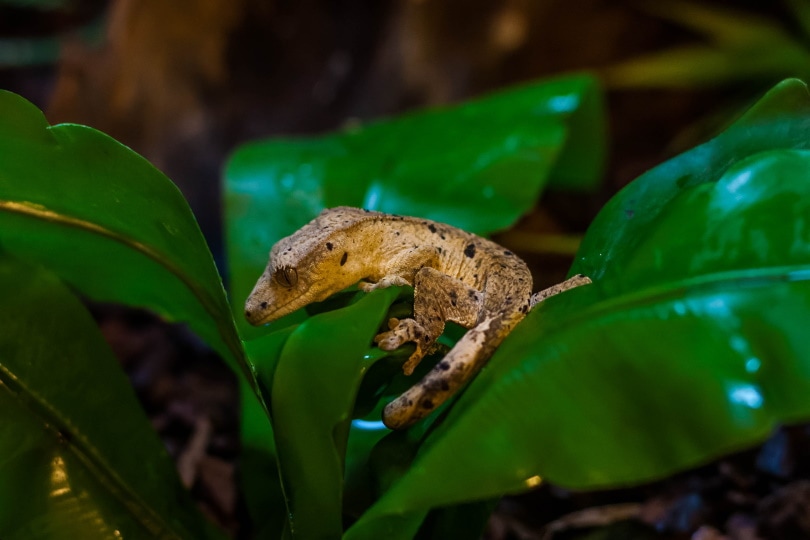
Colors
The crested gecko can come in different colors, with the most common being cream or brown. Wild-type varieties will also be orange, gray, yellow, red, or brownish with or without tiger stripping, but these reptiles rarely have a single solid coloration.
You’ll find them with lateral stripes, dark spots, or patterns. Their colors aren’t fixed as you can’t foresee what a baby crested gecko’s colors will be by the parent’s colorations.
Physical Description
Although coloration varies wildly, all crested geckos have a crest that extends from their head down the back, but its size differs with individuals. The spiky protrusion gives this lizard a fierce appearance,2 but it’s not rough to handle, although that’s not recommended due to fragility.
While this crest or ridge also runs from each eye down to the tail, the crested gecko possesses hair-like projections above their eyes that resemble eyelashes.
The eyes aren’t covered by eyelids except for the narrow slit covers, and they’ll often lick their eyeballs to remove dust and add moisture. They have rounded toe pads on their feet, enabling them to climb and grab onto vertical surfaces, plus they’re prolific leapers.
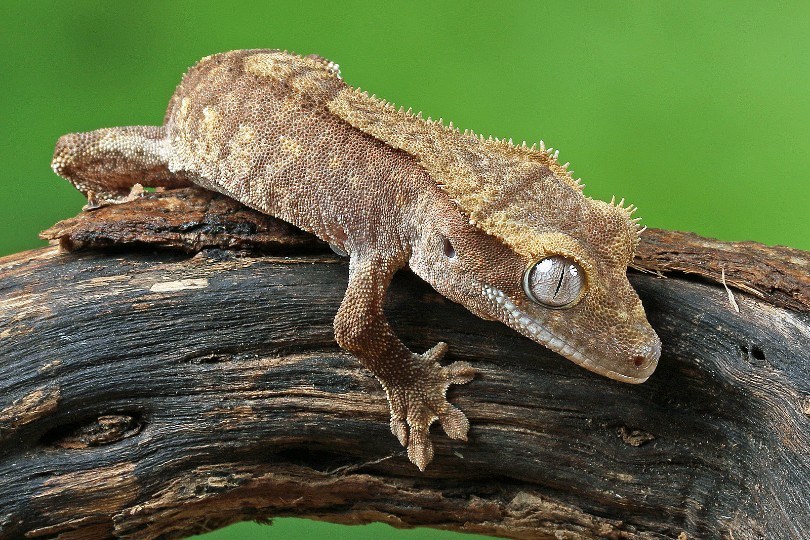
Size, Weight, and Lifespan
A crested gecko will reach a total length of about 8–10 inches, but half of that comprises the tail. Mature individuals weigh around 1.235 to 1.94 ounces.
Males are considered capable of breeding at weights of around 0.881 ounces. However, the female crested geckos may not be ready to reproduce until they’ve attained a 1.235-ounce weight.
These reptiles are long-lived and have been known to reach 25 years of age in captivity,3 but the average lifespan is 10 to 15 years.
Crested Gecko Gender
Until they’re fully mature, you can’t tell what gender a crested gecko juvenile is. Most are sold unsexed, while identifiable adults are more expensive. Females are more suitable for group living, and you can keep three or four of them in an enclosure, but males don’t tolerate each other.
From age 3 to 5 months, you can identify the gender by looking for two bulges located near the male’s tail base. Males also have a set of prominent pre-anal pores near their vents- these bulges are created by the reptile’s hemipenes and are lacking in the females.
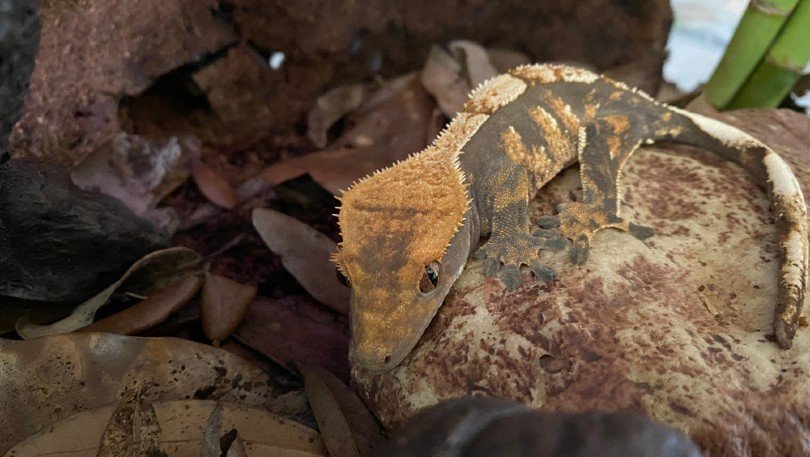
Behavior and Temperament
Crested geckos are naturally alert and curious, plus they’ll be flighty if not accustomed to handling. The reptile is an arboreal lizard and tends to jump off when spooked, but they rarely bite, although you’ll get nipped if your pet feels threatened.
Being nocturnal, you’ll find that it’s mostly active at night, often exploring the walls and higher-up areas of its habitat. It’ll spend daylight hours sleeping in a secure spot and will feed when awake at night.
Keeping the Crested Gecko as a Pet
Before New Caledonia stopped issuing export permits for crested geckos, biologists had removed several specimens for study. Such individuals formed the established breed lines of this reptile that are now widely bred and kept all over the US and Europe.
The crested gecko has a low-maintenance selling point, but there are a few factors that are necessary for a successful menagerie. That includes the tank conditions and habitat setup that should closely mimic the lizard’s natural rainforest habitat, and these include:

Conclusion
The crested gecko is native to the island of New Caledonia, where it was re-discovered in 1994 after being thought to be extinct. It’s a hardy and relatively easy-to-keep reptile that doesn’t require an overly elaborate aquarium setup or a complicated diet.
These lizards are suitable for young and novice pet keepers since they’re low maintenance and have a long lifespan of between 10 and 15 years.
Featured Image Credit: Jeff McGraw, Shutterstock

